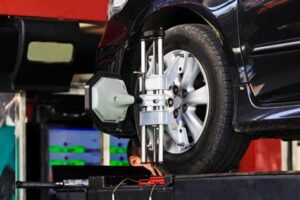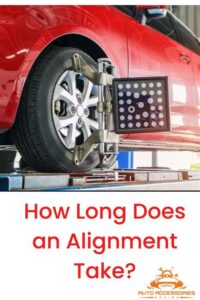Discover the importance of car alignment, its effects, signs of misalignment, and the benefits of regular alignment checks for optimal vehicle performance.Keeping your vehicle in optimal condition goes beyond routine oil changes and tire rotations; one crucial aspect often overlooked is car alignment. Misaligned wheels can lead to a host of problems that affect not only your car’s performance but also your safety on the road. In this blog post, we’ll delve into what car alignment really means and how it impacts your driving experience. We’ll explore the various effects of misalignment, the telltale signs that your wheels may be askew, and the numerous benefits of maintaining proper alignment. Finally, we’ll discuss why regular alignment checks should be a key component of your vehicle maintenance routine. Understanding these elements can help you save money, enhance your vehicle’s longevity, and ensure a safer drive. So, let’s get started on uncovering the importance of car alignment!
What is car alignment?
Car alignment, often referred to as wheel alignment, is a critical maintenance procedure that ensures your vehicle’s wheels are adjusted to the manufacturer’s specifications. Proper alignment involves a series of precise adjustments to the angles of the wheels, which must be parallel to each other and perpendicular to the ground. These adjustments primarily affect the vehicle’s suspension system, including components such as the axles, tires, and steering.
When a vehicle is correctly aligned, it promotes even tire wear, improves handling, and enhances fuel efficiency. Misalignment can lead to various issues, including poor handling and increased tire wear. There are three main angles that are adjusted during car alignment: camber, toe, and caster.
The camber angle refers to the tilt of the wheels in relation to the vertical axis, which can be positive or negative. The toe angle indicates whether the wheels are pointed inward or outward when viewed from above, while the caster angle affects the balance and steering of the vehicle by determining the angle of the steering axis.
Effects of misaligned wheels
When your vehicle’s wheels are misaligned, it can lead to a multitude of problems that affect both the performance and safety of your car. One of the most immediate effects of misalignment is uneven tire wear. Tires that are not properly aligned will wear down at different rates, forcing you to replace them before their time. This can significantly increase your overall maintenance costs.
Another significant impact of wheel misalignment is decreased fuel efficiency. When the wheels are not aligned, the vehicle requires more effort to travel straight, leading to increased friction and drag. This means your engine has to work harder, ultimately burning more fuel. This not only costs you money but also contributes to a larger carbon footprint.
Additionally, driving a car with misaligned wheels can compromise handling and stability. You may notice that your vehicle pulls to one side, making steering difficult and potentially leading to dangerous situations on the road. This stability issue can not only affect your comfort but also raises the risk of accidents.
Signs of misalignment
Recognizing the signs of misalignment is crucial for every vehicle owner. Misalignment can lead to uneven tire wear, decreased fuel efficiency, and poor handling. Here are some key indicators to watch for:
- Uneven Tire Wear: If you notice that your tires are wearing down unevenly, it could be a clear sign of misalignment. Check the tread on each tire; if one side is significantly worn compared to the other, it’s time to investigate further.
- Vehicle Pulling to One Side: Does your car tend to drift or pull to one side while driving? This is a common symptom of misaligned wheels. If you find yourself constantly adjusting the steering wheel to keep your vehicle straight, it’s essential to have it checked.
- Steering Wheel Off-Center: A steering wheel that is not centered when you are driving straight can indicate that your wheels are misaligned. This noticeable shift can be both frustrating and dangerous.
- Increased Vibration: If you feel excessive vibrations through the steering wheel or the seat, it may signal that your wheels aren’t aligned properly, influencing overall driving comfort and safety.
Being aware of these signs allows you to act quickly, ensuring the longevity of your car and the safety of its passengers. Regular checks for these signs can save you from the more severe consequences associated with misalignment.
In addition to the factors mentioned above, keep in mind that issues like alignment missteps can lead to more significant problems down the line, including damage to your suspension system. It’s worth investing time in routine maintenance to detect these issues early.
If you experience any of these symptoms of misalignment, don’t hesitate to consult a professional. They can provide you with the necessary adjustments to restore your vehicle to its optimal performance.
Benefits of proper alignment
Maintaining proper car alignment is crucial for various reasons, and the benefits extend beyond just the performance of the vehicle. Proper alignment ensures that all four wheels are positioned correctly, which can greatly improve the overall driving experience.
One of the most significant benefits of proper alignment is the enhancement of fuel efficiency. When the wheels are aligned correctly, the car can travel more smoothly, requiring less effort and energy to move forward. This reduction in friction helps improve gas mileage, resulting in cost savings over time.
Another important aspect is safety. Proper alignment contributes to better handling and stability of the vehicle. When your wheels are aligned, the car is more responsive to steering inputs, making it easier to navigate turns and react to road conditions. This can significantly reduce the risk of accidents and improve overall road safety.
Furthermore, proper alignment helps reduce tire wear, prolonging the life of your tires. When wheels are misaligned, certain tires wear down faster than others, necessitating earlier replacements. Investing in regular alignment checks can save money in the long run by avoiding premature tire purchases.
In summary, proper car alignment delivers several advantages including improved fuel efficiency, enhanced safety, and reduced tire wear, ultimately contributing to a smoother and more economical driving experience.
Importance of regular alignment checks
Regular alignment checks are essential for maintaining the overall performance and safety of your vehicle. Ignoring these checks can lead to a multitude of issues, not just regarding your tires but affecting other components of your car as well.
When your car is properly aligned, it ensures that all wheels are pointing in the same direction. This affects not only tire wear but also fuel efficiency. Misaligned wheels can cause tires to wear unevenly, resulting in the need for premature replacements and increased expenses. According to industry standards, having your wheels aligned can improve your vehicle’s gas mileage by up to 10%.
In addition to saving on fuel and tire costs, regular alignment checks can contribute to your safety on the road. Vehicles with properly aligned wheels have better stability, making it easier to control the car, especially during inclement weather conditions. To ensure your safety and the longevity of your vehicle, it’s advisable to have your wheel alignment checked every 6,000 miles or so, or at the first sign of misalignment.
Frequently Asked Questions
What is car alignment?
Car alignment refers to the adjustment of a vehicle’s suspension system, affecting how the wheels make contact with the road.
Why is car alignment important?
Proper car alignment ensures even tire wear, enhances vehicle handling, and improves fuel efficiency, contributing to a safer driving experience.
How can I tell if my car needs an alignment?
Signs that your car may need an alignment include uneven tire wear, pulling to one side, and a crooked steering wheel while driving straight.
How often should I get my car aligned?
It is generally recommended to check your car’s alignment every 6,000 miles, or when you notice any signs of misalignment.
Can misalignment affect my fuel efficiency?
Yes, misalignment can cause increased rolling resistance, leading to poor fuel efficiency and higher gas expenses.
What factors can cause my car to go out of alignment?
Common factors include hitting potholes, curbs, or other road hazards, as well as normal wear and tear on suspension components.
Is car alignment the same as wheel balancing?
No, car alignment adjusts the angles of the wheels for proper contact with the road, while wheel balancing ensures that the weight of the tire and wheel is evenly distributed.





